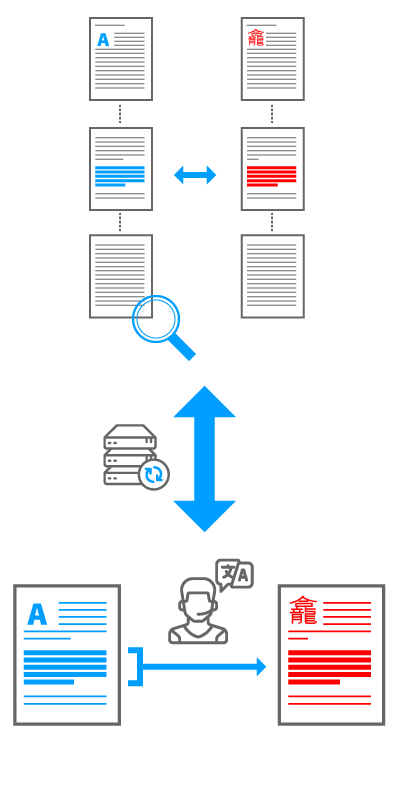Translation Memory & Term Base
How can you ensure the quality of your translations?
This is a fundamental question that everybody asks when sending a file for translation by an external service provider. It is also the primary criterion mentioned by clients as important, even ahead of price or turnaround time.
The quality of a translation rests on three primary factors:
- The skill level of the translator working on your project. Our role, as agent, consists of handing on your document to the most specialised translator in the field. This is why we work with many translators, each of whom is an expert in a field and only translates into his mother tongue.
- Tools (CAT) used during translation It is important, and even fundamental to keep a trace of each translation for any future services. This is the notion of a Translation Memory. It is also essential to use terminology adapted to your company and profession, this is the notion of a Term Base.
- Checking/proofreading once the translation is complete.
What is a Translation Memory?
It is a bilingual term base which stores all sentences translated on a sentence by sentence basis by the translator. These sentences (known as segments) once stored may be used in future translations, so as to never have to translate two identical sentences twice. This leads to massive time and cost savings, but also guarantees homogeneous terms from one translation to the next. The larger the translation memory, the more reliable and quick the translations.
STiiL Traduction is a partner of SDL Trados (link), leader in CAT tools. We use the latest versions of Studio and MultiTerm 2017.

What is the difference between a Translation Memory and Automated Translation?
A translation memory is created by a translated as the translations are undertaken. It starts out empty and is populated with each new project.
An automated translation consists of translating a document without human involvement, thanks to a translation engine. The result may be very quick but the level of quality is often mediocre and far from that of a real-life translator. It is therefore essential in this instance to have two thorough proofreadings by professional translators. STiiL Traduction does not offer automated translation.
What is a Term Base?
It is a multilingual database (or glossary) with a list of terms approved by the client. This term base is used alongside the translation memory during the translation. As the translator works, it shows those terms it includes and proposes the translation to the translator. No error is possible as to the choice of terms specific to your business.
The translation memory and term base are the two pillars of CAT tools. They guarantee an optimum level of quality to the translations. So as to be as effective as possible, the client should collaborate for their establishment and development.
What checks should be done on translations before delivery?
1st check: the translator performs a post-translation check (spelling, grammar, syntax, coherence, terminology, formatting). In the majority of cases, this “self-check” is sufficient to provide a high-quality translation corresponding to client expectations.
2nd check: before delivery, all translations are checked by STiiL Traduction, which checks the respect of translation instructions, formatting and proper use of terminology if glossaries exist.
3rd check (optional): in some cases, notably where a document requires printing, publication or special attention (patents, contracts, pharmacology), a “thorough proofreading” is undertaken by a second translator, of the same mother tongue and specialising in the same sector. The translation is then compared to the source text to ensure that no mistranslation or error has occurred during translation. The second translator may also perfect any sentences where necessary. This thorough proofread is billed separately either in terms of time spent, or the number of words.
NB: checks 1 and 2 are part of the initial service.
